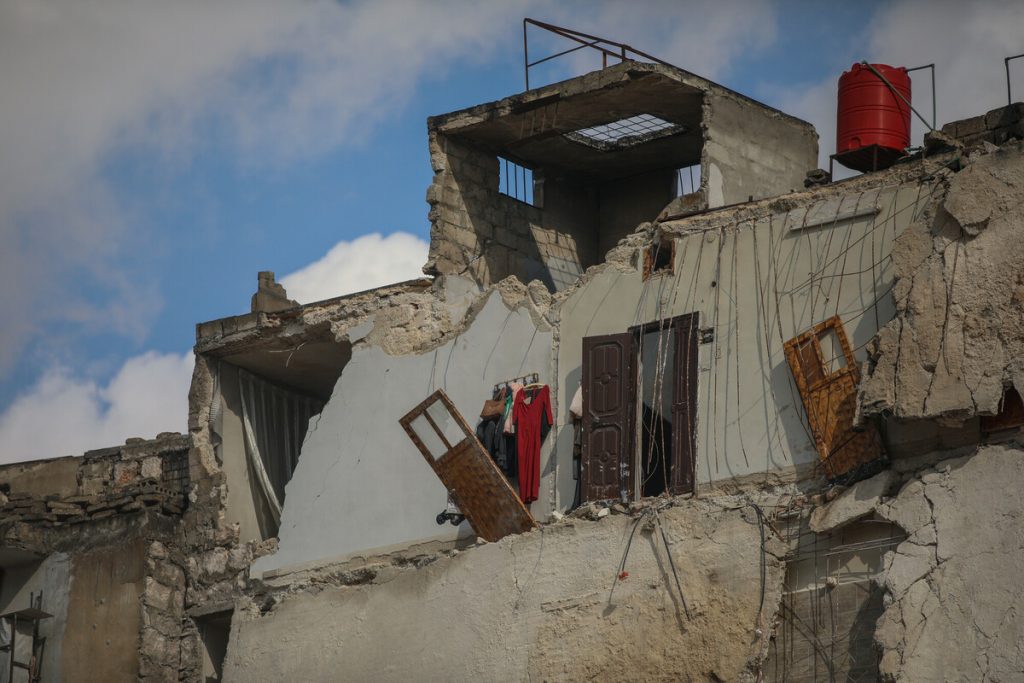Five Facts About Climate Change and Inequality
Climate change affects the most vulnerable first and worst. That's why Oxfam is making sure that climate action is central to our fight against inequality.
The climate emergency is one of the most critical issues we face today. It's an existential threat affecting people in every country on every continent, deepening poverty, conflict, and hunger. Our elected officials must give it the necessary urgency, attention, and investment.
People's lives depend on it.
Here are five things to know about inequality and the climate crisis:
Climate change disproportionally impacts women.
Whether walking further to collect water, being last to eat during droughts, or assuming more household care responsibilities in the wake of extreme weather, the climate crisis leaves women increasingly vulnerable to gender-based violence, the effects of future disasters, health threats and other gender inequalities.
Women are also more likely to live in poverty than men, have less access to basic human rights, and face systematic violence exacerbated in times of instability.
The people who contribute the least to climate change are on the frontlines facing its worst impacts.
For example, in the first quarter of 2022, an estimated 13 million people in Ethiopia, Kenya, and Somalia were displaced by climate-induced droughts and forced to abandon their homes in search of water and pasture, despite having done little to cause the climate crisis. The African continent accounts for just four per cent of global gas emissions, the smallest share among all the world's regions.
Indigenous people living in Canada's North face some of the worst effects of climate change.
Even if global emissions are stabilized below the Paris Agreement goal of 2°C, research shows that Inuit communities across the Northwest Territories, Nunavut, northern Quebec, and northern Labrador are locked into the impacts of past and current emissions for at least the next 30 years. The region, representing one-third of Canada's landmass and half of its coastline, has already lost 40 per cent of its sea ice cover. Extreme weather events, storm surges, and severe coastal erosion are causing loss and damage to people's housing and community infrastructure.
The fossil fuel industry is the biggest barrier to transformative action to tackle the climate emergency.
The oil and gas sector is Canada's largest and fastest-rising emission source. Emissions have doubled since 1990 and now represent nearly 30 per cent of the country's total release of greenhouse gases (GHGs).
Research from Environmental Defense Canada shows how the industry pays lip service to climate action while secretly lobbying against it and reaping great financial benefits from doing so. These companies have successfully lobbied for lower tax payments and against environmental regulations. Oil and gas production has soared in the past twenty years. But between 2000 and 2017, corporate taxes paid on drilling and refining declined by more than 50 per cent. Canada's environmental laws include significant exemptions and special treatment for this sector to the detriment of people and the environment.
As the industry expands and reaps substantial corporate profits, job opportunities dwindle as the sector moves increasingly towards automation. Meanwhile, Canadian oil and gas CEOs rake in salaries of more than $10 million annually.
The super-rich are super polluters.
Over the past 25 years, the richest one percent of the world's population has been responsible for more than twice as much carbon pollution as the three billion people who make up the poorest half of humanity.
A billionaire emits a million times more greenhouse gases than the average person.
In Canada, the richest 10 per cent of Canadians were responsible for about a quarter of the national cumulative carbon emissions between 1990 and 2015, nearly as much as the poorest 50 per cent of Canadians. Today, if you take one person from the richest five per cent of Canadians, their carbon footprint is equal, on average, to that of 470 people living in poverty in the poorest five per cent of humanity.
The Time for Action is Now
The time for climate action is now. Oxfam is dedicated to fighting climate change and supporting the communities most impacted by it. Together we can fight climate change and build a more equal and sustainable future. Stand with us for climate justice. Elizabeth Wathuti and other climate activists from the Global South are calling on leaders at COP27 to get frontline communities the support they need by delivering loss and damage finance.
Add your voice to Elizabeth's letter:

